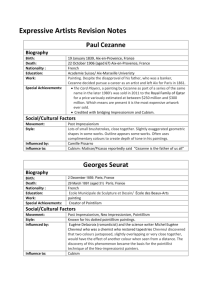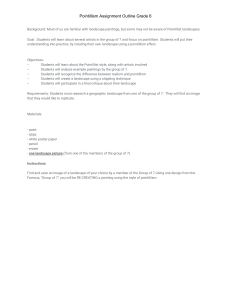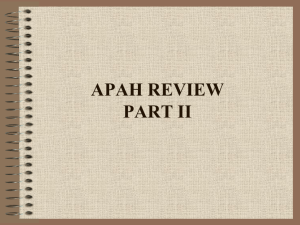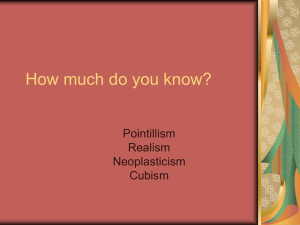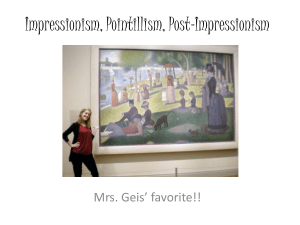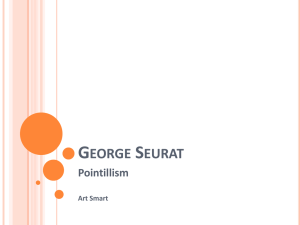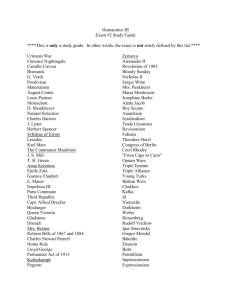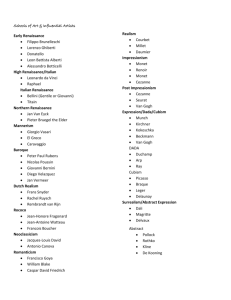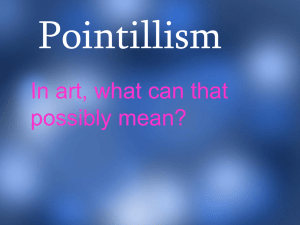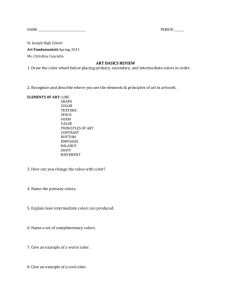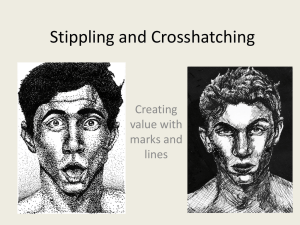Introduction - Professor Fashion
advertisement
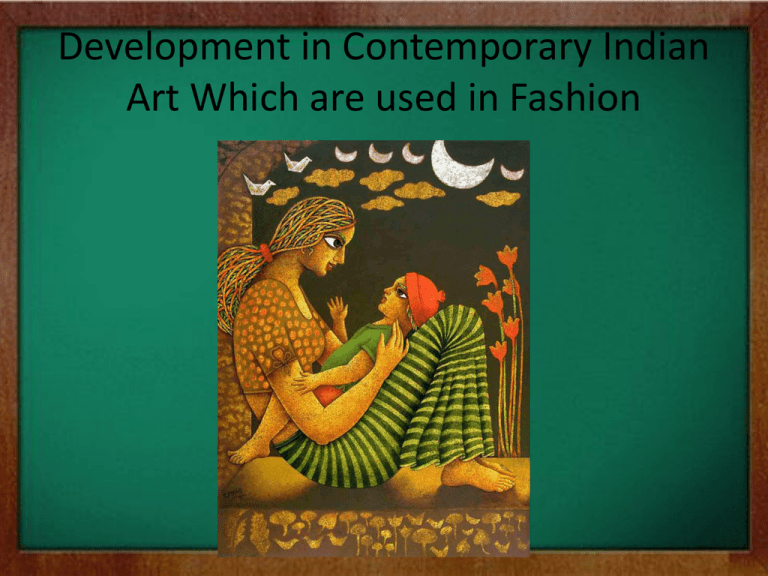
Development in Contemporary Indian Art Which are used in Fashion • Due to Globalization and Development of Information Technology world became a small place to live in. • In keeping pace with times, photo and hyperrealism, installation art, new media creations, and digital representations found their way into Indian artistic and public awareness Contemporary Artist • • • • • • • • . M.F. Hussain Surendran Nair Jayashree Chakravarty Rekha Rodwittiya Atul Dodiya Subodh Gupta Baiju Parthan Anju Dodiya's Contemporary Artistic Techniques • • • • The different types of modern artists include Impressionism, Cubism Pointillism Surrealism. Impressionism • Impressionism is a 19th-century art movement that originated with a group of Paris-based artists. Their independent exhibitions brought them to prominence during the 1870s and 1880s, in spite of harsh opposition from the conventional art community in France. • Impressionist painting characteristics include relatively small, thin, yet visible brush strokes, open composition, emphasis on accurate depiction of light in its changing qualities ordinary subject matter, inclusion of movement as a crucial element of human perception and experience, and unusual visual angles. Cubism Cubism was a truly revolutionary style of modern art developed by Pablo Picasso and Georges Braque's. It was the first style of abstract art which evolved at the beginning of the 20th century in response to a world that was changing with unprecedented speed. Cubism was an attempt by artists to revitalize the tired traditions of Western art which they believed had run their course. The Cubists challenged conventional forms of representation, such as perspective, which had been the rule since the Renaissance. Their aim was to develop a new way of seeing which reflected the modern age Pointillism • The practice of applying small strokes or dots of contrasting color to a surface so that from a distance they blend together. • The practice of Pointillism is in sharp contrast to the traditional methods of blending pigments on a palette. Pointillism is analogous to the four-color CMYK printing process used by some color printers and large presses that place dots of Cyan (blue), Magenta (red), Yellow, and Key (black). Televisions and computer monitors use a similar technique to represent image colors using Red, Green, and Blue (RGB) colors. • If red, blue, and green light (the additive primaries) are mixed, the result is something close to white light (see Prism (optics)). Pointillist colors often seem brighter than typical mixed subtractive colors. This may be partly because subtractive mixing of the pigments is avoided, and partly because some of the white canvas may be showing between the applied dots. • The painting technique used for pointillist color mixing is at the expense of the traditional brushwork used to delineate texture. • The majority of pointillism is done in oil paints. Anything may be used in its place, but oils are preferred for their thickness and tendency not to run or bleed.
